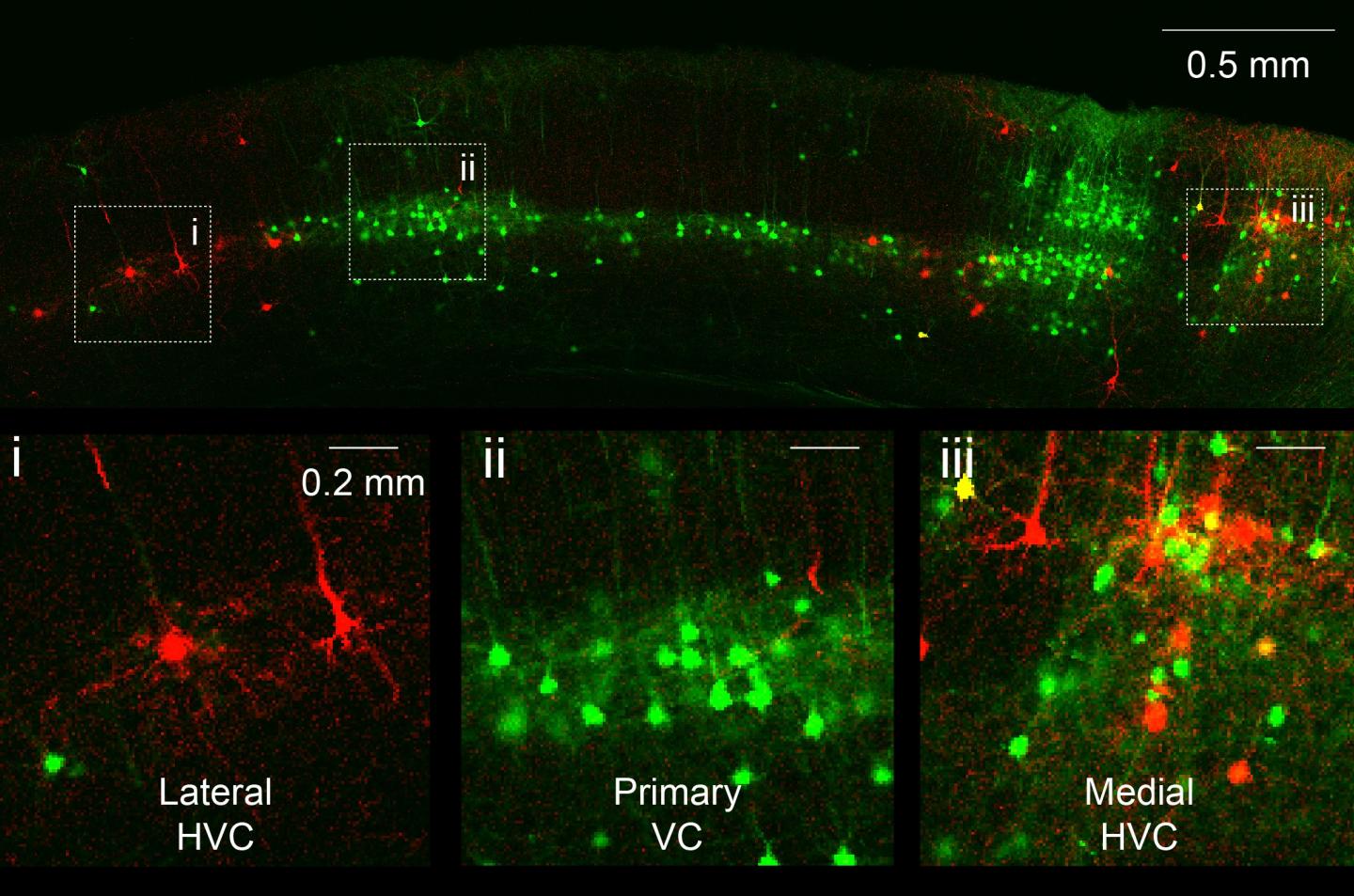When riding your bike to the store you might have two very different reasons to steer: plain old reflex when you see something dart into your path, or executive control when you see street signs that indicate the correct route. A new study by MIT neuroscientists shows how the brain is wired for both by tracking the specific circuits involved and their effect on visually cued actions.
[ Source: The Picower Institute | November 30, 2020 ]
The research, published in Nature Communications, demonstrates in mice that neurons in the anterior cingulate cortex (ACC) area of the prefrontal cortex, a region at the front of the brain associated with understanding rules and implementing plans, projects connections into an evolutionarily older region called the superior colliculus (SC). The SC carries out basic commands for reactive, reflexive movement. A key finding of the study is that the purpose of the ACC’s connections to the SC is to override the SC when executive control is necessary.
“The ACC provides inhibitory control of this ancient structure,” said senior author Mriganka Sur, Newton Professor of Neuroscience in The Picower Institute for Learning and Memory and the Department of Brain and Cognitive Sciences at MIT. “This inhibitory control is a dynamic entity depending on the task and its rules. This is how a reflex is modulated by cortical control.”
Lead author Rafiq Huda, an assistant professor of cell biology and neuroscience at Rutgers University and a former postdoc in Sur’s lab, added that by looking at specific circuits between the ACC and both the SC and the visual cortex (VC), the researchers could resolve uncertainty about how the cortex regulates more basic brain regions during decision-making.
“There has been an ongoing debate about what exactly is the role of the cortex in sensorimotor decisions,” Huda said. “We were able to provide some answers by looking at the level of different ACC projection pathways, which would not have been possible by looking at all of ACC at once. Our work provides evidence for the possibility that inhibitory control of subcortical structures like the SC is a unifying principle for how the ACC, and the prefrontal cortex generally, modulates decision making behavior.”
Sense and spin
To make their findings, the team first traced circuits going into and out of the ACC from both the VC and the SC, confirming that the ACC was in a prime position to integrate and process information about what the mice saw and what to do about it. Throughout the study they chose to focus on these structures on the left side of the brain.
After tracing these left side ACC-SC and ACC-VC circuits, the team then trained mice to play a video game that required both sensation (seeing a cue on one side of the screen or the other) and action (spinning a trackball to move the cue). One group of mice had to move the cue inward toward screen’s center. The other group had to move the cue outward toward the screen’s edge. In this way, cues could be on either side visually and different groups of mice had to move them according to different rules.
As mice worked, the scientists observed the activity of neurons in the various regions to learn how they responded during each task. Then the researchers manipulated the neurons’ activity using optogenetics, a technique in which cells are genetically engineered to become controllable by flashes of light. These manipulations allowed the scientists to see how inhibiting neural activity within and between the regions would change behavior.
